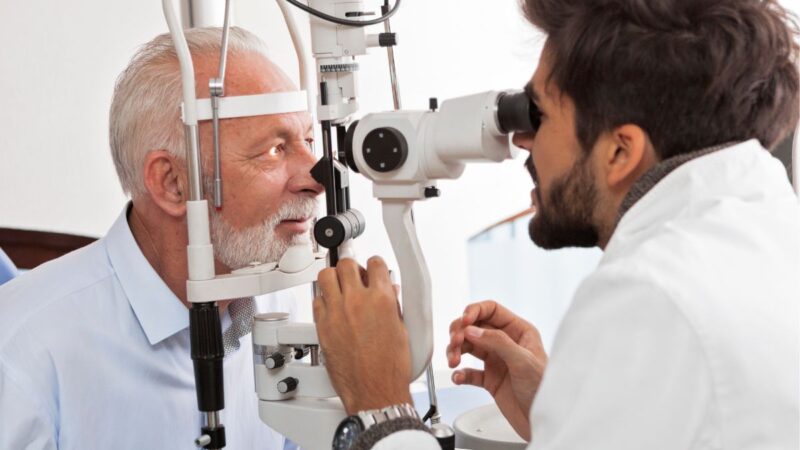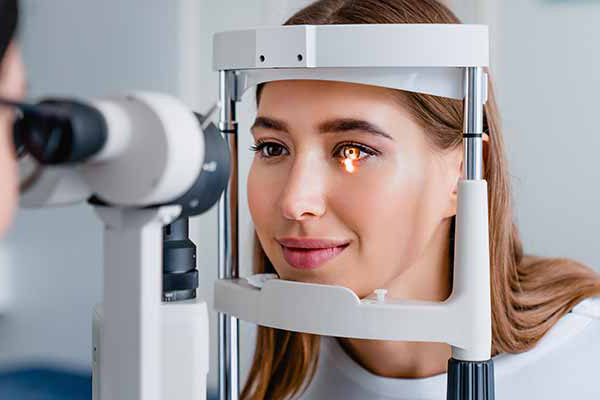Individualized Cataract Care Service: Check Out Our Clinic for Solutions
Exploring the State-of-the-Art Technologies Made Use Of for Detecting and Treating Eye Conditions
In the world of ophthalmology, the evolution of innovation has actually significantly improved the devices readily available for diagnosing and treating numerous eye problems. From advanced imaging innovations that supply detailed insights into ocular frameworks to robotic-assisted medical treatments that offer exceptional accuracy, the landscape of eye treatment is frequently evolving.

Advanced Imaging Technologies
Advanced Imaging Technologies have actually transformed the field of ophthalmology by giving in-depth and precise visualization of the eye structures. Optical Comprehensibility Tomography (OCT) stands apart as a vital technology in this realm. OCT makes use of light waves to capture high-resolution cross-sectional photos of the retina, enabling the identification of minute architectural adjustments. This non-invasive technique aids in the very early discovery and monitoring of different eye problems such as macular degeneration, diabetic retinopathy, and glaucoma.
Furthermore, Fundus Photography is one more necessary device in ocular imaging. This strategy involves capturing comprehensive pictures of the back of the eye, including the retina and optic disc. Fundus Photography helps in documenting the progression of eye illness, examining therapy effectiveness, and informing individuals concerning their eye wellness.

Robotic-Assisted Operation
Robotic-assisted procedures have dramatically advanced the abilities of ocular surgical treatment, ushering in a brand-new period of precision and performance in treating various eye conditions. By incorporating robotic innovation into operations, ophthalmologists can attain unequaled accuracy and control, causing boosted client outcomes.
One of the main advantages of robotic-assisted surgical procedure in ophthalmology is the enhanced mastery and security it uses to specialists. The robotic arms can carry out precise movements with a high level of accuracy, enabling fragile treatments with very little invasiveness. This level of accuracy is especially useful in surgeries entailing the retina, where also minor mistakes can have considerable implications for a patient's vision.
In addition, robotic-assisted surgical systems provide real-time imaging and responses to the cosmetic surgeon, enabling them to make educated decisions throughout the procedure. This modern technology improves the surgeon's situational recognition and enables for changes to be made immediately, ensuring optimum results for the person.
Artificial Intelligence in Diagnostics
With the advancement of advanced modern technologies improving medical precision in ocular procedures, the combination of Artificial Intelligence in diagnostics has arised as a critical growth transforming the area of eye care. Man-made Knowledge (AI) algorithms are being progressively made use of to evaluate intricate data from imaging innovations like optical comprehensibility tomography (OCT) and fundus photography to assist in the very early discovery and accurate diagnosis of numerous eye problems. These AI systems can efficiently determine patterns and abnormalities in photos that may not be discernible to the human eye, allowing quicker medical diagnosis and treatment planning.
AI algorithms can likewise forecast condition development, advise tailored therapy strategies, and analyze the effectiveness of treatments. By streamlining the analysis procedure, AI not just boosts the performance of eye treatment experts however likewise enhances client results by allowing timely interventions. As AI remains to breakthrough, its duty in diagnostics is anticipated to broaden, using new possibilities for very early why not try here treatment and individualized treatment in the field of ophthalmology.
Gene Treatment Advancements
In the realm of ophthalmic advancements, current strides in genetics therapy developments have actually triggered considerable interest among scientists and health care professionals alike. Genetics treatment holds immense promise in changing the therapy of different eye conditions by targeting the hidden genetic causes. By introducing genetic material into cells to make up for uncommon genetics or to supply an absent genetics, genetics therapy uses a customized strategy to addressing acquired eye disorders such as retinitis pigmentosa, Leber hereditary amaurosis, and others that were formerly considered untreatable.

As research in gene therapy continues to advancement, the possibility for tailored treatments for a bigger series of eye problems expands, providing brand-new expect patients with genetic eye illness.
Online Truth Recovery
Virtual fact rehab has emerged as a cutting-edge approach in boosting the recovery and recovery processes for people with different aesthetic impairments. cataract care service. By replicating real-world environments with immersive innovation, virtual truth provides a distinct system for vision treatment and rehab. This cutting-edge method makes it possible for people to participate in interactive workouts and tasks developed to improve aesthetic acuity, depth assumption, eye coordination, and overall visual functioning
One key advantage of digital fact rehabilitation is its ability to tailor therapy programs based upon the particular demands and capacities of each individual. Via real-time feedback and tracking, medical care professionals can track progress, change interventions, and provide individualized like optimize results. Furthermore, virtual truth technology can create a risk-free and controlled room for individuals to exercise visual tasks, overcome obstacles, and develop confidence in an online setting before transitioning to real-world circumstances.
Final Thought
Finally, the advancements in imaging innovations, robotic-assisted surgical procedures, expert system diagnostics, gene treatment technologies, and online fact recovery have significantly improved the diagnosis and browse around this site treatment of eye problems. refractive surgeries in al. These state-of-the-art innovations have transformed the field of ophthalmology, permitting even more exact and effective explanation treatments. As innovation continues to develop, the future of eye care looks encouraging with the potential for a lot more cutting-edge solutions to boost individual end results
In the realm of ophthalmology, the evolution of innovation has actually substantially improved the tools offered for identifying and dealing with different eye problems. Fundus Photography assists in documenting the development of eye diseases, evaluating therapy effectiveness, and educating clients about their eye health.
Man-made Intelligence (AI) algorithms are being progressively used to examine complex information from imaging technologies like optical coherence tomography (OCT) and fundus photography to aid in the early detection and accurate medical diagnosis of different eye problems.In conclusion, the improvements in imaging innovations, robotic-assisted surgeries, artificial knowledge diagnostics, genetics treatment innovations, and digital fact recovery have significantly improved the medical diagnosis and therapy of eye conditions. As innovation continues to progress, the future of eye care looks encouraging with the possibility for also more cutting-edge remedies to improve client end results.